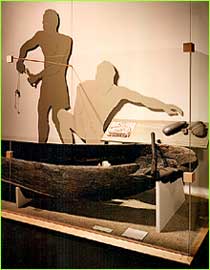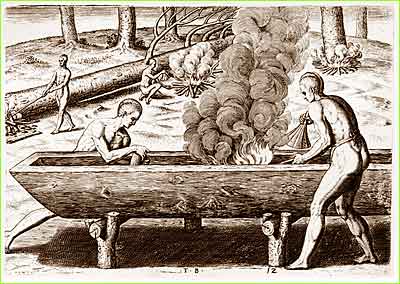



During a drought in 1911, workers who were pumping water from Mountain Pond in Bethel discovered a Native American canoe. The vessel, which measures slightly more than 14 feet, was carved from a solid piece of American chestnut. It was constructed using a scorch and strip technique in which the builder used controlled burning and chiseling tools to carve out the center of the log.
This late 16th to early 17th century canoe was sunk in about 40 feet of water by loading it with stones. Some witnesses claim that other types of artifacts were in the canoe; however, none were precisely described or recovered. The canoe may have been placed in the pond for winter storage, or it is possible that its owner traveled to another area by land and stored it for use on his way back. The identity of the Native Americans who made the canoe is not known; however, Ramapo or Titicus villages were in the region during this time. The Paugessett tribe also inhabited the area.
The submerged condition of the canoe enhanced its preservation. In fact, all of the Native American canoes discovered in New England have been found under water. The Bethel canoe is one of three found in Connecticut, and is now a part of the anthropology collections at the Connecticut State Museum of Natural History at the University of Connecticut.
The canoe while on display at the Connecticut State Museum of Natural History at UConn.

1590 Theodor De Bray engraving of the making of a dugout canoe.